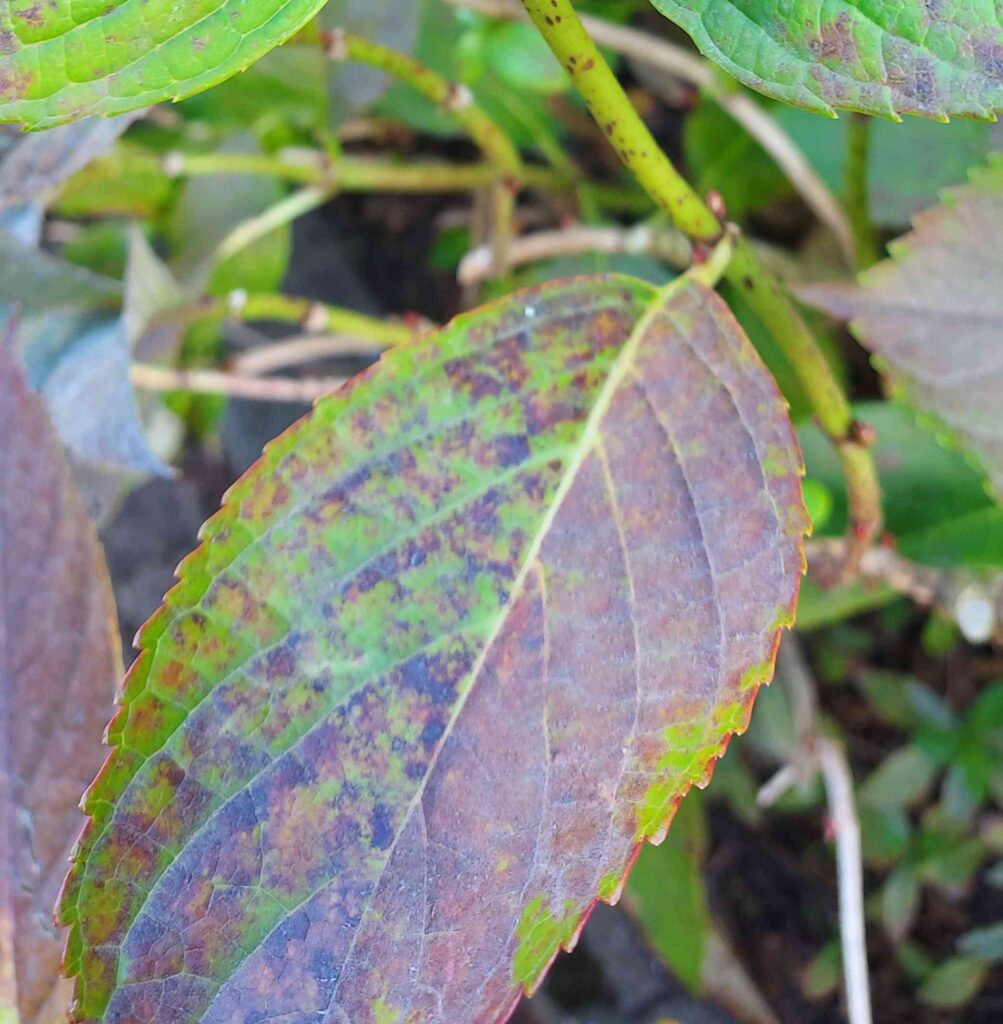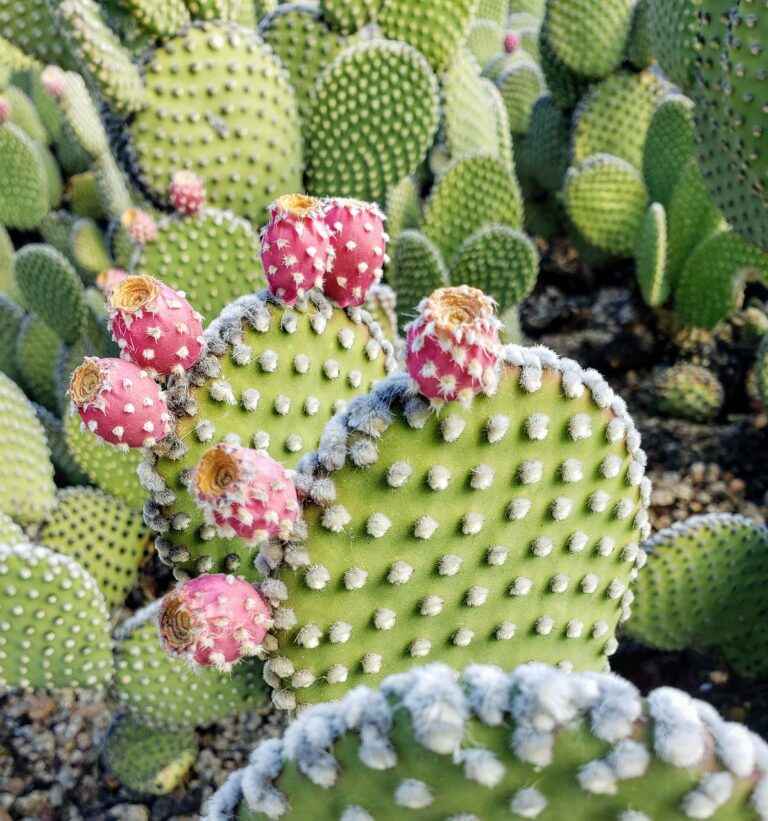Spots on Hydrangea Leaves
Spots on Hydrangea leaves can have different shapes and colors. Their apperance usually signals real problems. It may be due to fungal disease or cultivation errors.
Not treated bushes will loose their attractive apperance, will bloom less and eventually will die.
Yellow spots on hydrangea leaves
If leaves are yellow and brown, dry, with irregular spots that is the sign of burn. It will happen if hydrangea is exposed to strong sunlight when soil is not moist enough. Sometimes it can be due to intensive fertilization.
To avoid this type of damage, you should plant Hydrangea in a place, that offers shade during hottest time of the day. Additionally you should spread mulch under bush to keep soil moist.

When using hydrangea fertilizers, follow the manufacturers’ recommendations and use granulated slow-release fertilizers if possible.
Brown spots on hydrangea leaves
Fungi – Cercospora hydrangea
Brown spots on hydrangea leaves may be a sign of a fungal disease. The most common cause is leaf blotch. This disease affects hydrangeas that grow in gardens and in pots.
Cercospora hydrangea, which causes leaf blotch, strongly infects leaves, causing small (3-6 mm in diameter), round, brown or purple spots to appear on them. These spots are located on both sides of the leaf blade.

Symptoms starts on the lower leaves and then spread to the top. Whole shrubs lose vigor, grow less, and it is more difficult to form flower buds.
Despite that infection occurs in spring, symptoms of hydrangea leaf blotch are not visible until late summer. Disease develops very well during high humid periods. However it stops during drought.
Fungi – Colletotrichum gloeosporioides
Another disease of hydrangeas is hydrangea anthracnose. It manifest itself in the form of large (up to 2.5 cm in diameter), irregular, dark brown spots, slightly sunken in the leaf blade.
Unlike leaf blotch, anthracnose symptoms can appear simultaneously on the leaves and flowers at the bottom and top of the shrub. The fungus Colletotrichum gloeosporioides is responsible for this disease. It hibernates in dead plant material. Anthracnose thrives in hot (23-32 ° C), cloudy and rainy weather conditions, and the fungus spores spread with splashing water.
Grey spots on hydrangea leaves
Sometimes powdery mildew will attach Hydrangeas growing in gardens. This disease usually appears in spring and fall. Powdery mildew develops during watering. When leaves get in contact with water, especially those growing in the shade, and by nitrogen over-fertilization.
It is caused by the fungus Erysiphe polygoni which attacks the leaves of hydrangea. As a result of infection, the leaves of hydrangea show gray, mealy spots that quickly enlarge and take on irregular shapes. Over time, the spots turn yellow and dry out, and the leaves and tops of the shoots become distorted.
How to fight spots on hydrangea leaves
In the fight against fungal diseases, it is extremely important to regularly remove infected leaves and destroy them. They are a main source of re-infection. The whole shoots strongly affected by the disease should also be removed and destroyed. The following are also very important:
- avoid soaking leaves during watering
- grow shrubs in optimal conditions
- don’t grow hydrangea too dense (to close to each other)







